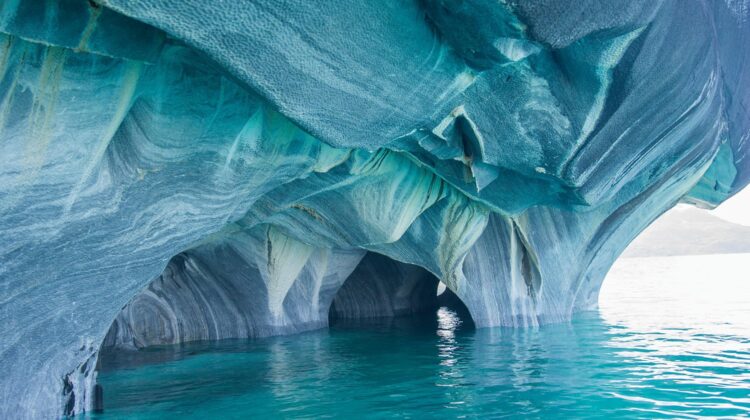
Nestled between the stunning landscapes of Chile and Argentina lies a geological wonder of unparalleled beauty – the Marble Caves. These mesmerizing caves, formed entirely out of pure marble, are gracefully adorned with the deep blue waters of General Carrera Lake, creating a breathtaking sight that captivates all who encounter it.
General Carrera Lake, also known as Lake Buenos Aires on the Argentine side, is a massive lake shared by the two countries in the enchanting region of Patagonia. Covering an expansive surface of 1,850 km², with 970 km² in the Chilean Aysén del General Carlos Ibáñez del Campo Region and 880 km² in the Argentine Santa Cruz Province, it proudly holds the title of the largest lake in Chile and the fourth largest in Argentina. The lake’s western basin plunges to an impressive depth of 586 meters.

A product of glacial origins, General Carrera Lake finds itself embraced by the imposing Andes mountain range, creating a majestic backdrop that adds to its allure. The lake’s waters eventually flow towards the Pacific Ocean through the meandering Baker River.
Despite the generally cold and humid climate prevailing in the surrounding areas of Chile and Argentina, General Carrera Lake enjoys a microclimate of its own, characterized by sunny weather. This unique weather pattern is cherished by the few settlements scattered along the lake’s shores, such as Puerto Guadal, Fachinal, Mallín Grande, Puerto Murta, Puerto Río Tranquilo, Puerto Sánchez, Puerto Ingeniero Ibáñez, and Chile Chico in Chile, and Los Antiguos and Perito Moreno in Argentina.
Historically, the coastal regions of the lake were first inhabited by criollos and European immigrants between 1900 and 1925. However, volcanic eruptions from the Hudson Volcano in 1971 and 1991 caused significant economic setbacks, particularly for the sheep farming industry.
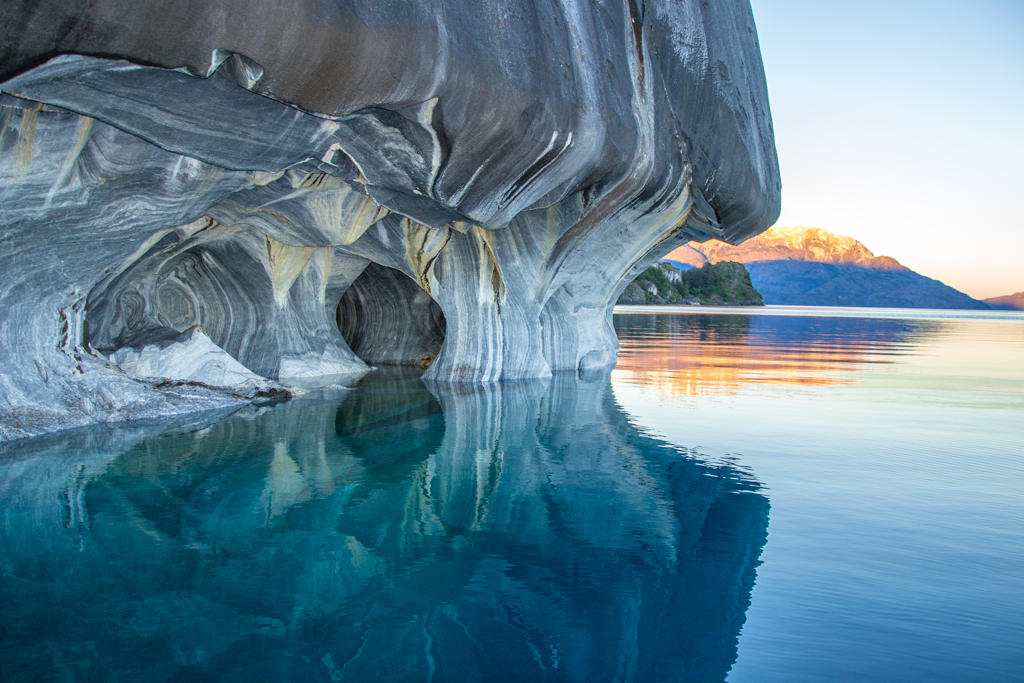
On the Argentine side of the lake, access is relatively straightforward, thanks to a strip of plains that was initially used by the Tehuelches and later explored by Francisco Moreno. National Route 40, established in the 1920s, further facilitates accessibility. On the other hand, the Chilean side of the lake remained mostly isolated until the 1990s when the Carretera Austral was created, connecting it to the rest of Chile and ushering in a wave of tourism in the region. A car ferry service now operates between Puerto Ingeniero Ibáñez and Chile Chico in the Chilean sector of the lake.
Amidst this natural wonder of General Carrera Lake, the Marble Caves stand as a testament to the wonders of geological evolution. These caves, located in the commune of Chile Chico, specifically in Port Calm (Puerto Tranquilo), boast a unique formation shaped by the lake’s relentless action against the marble peninsula. Accessible only by boat, visitors can embark on a half-hour navigation journey through the caves, depending on weather conditions.
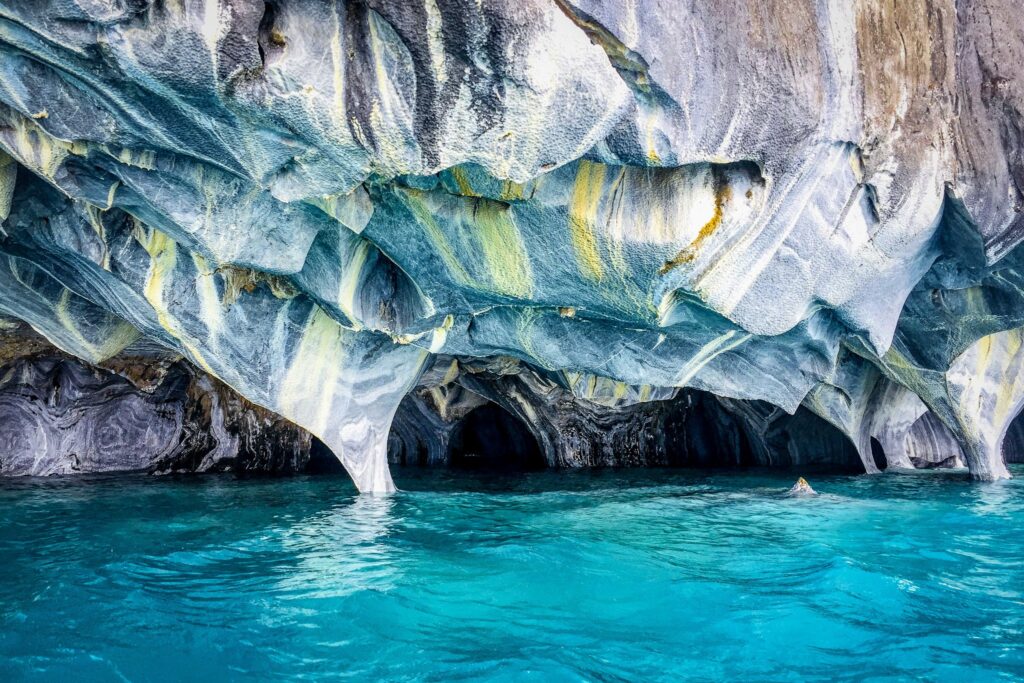
The sight that awaits is nothing short of magical. Shining marble walls, polished over time by the gentle caress of the water, create an otherworldly atmosphere that leaves an indelible mark on those who witness it. These calcium carbonate formations have been rightfully recognized as a Sanctuary of Nature (Santuario de la Naturaleza).
The intriguing blue color of the lake’s water adds to the allure of the Marble Caves. The vast General Carrera Lake receives its waters from several glaciers in the Patagonian Andes. As glacial ice contains minute particles, when it melts, these particles remain suspended in the water, creating a slight turbidity. As a result, the glacial meltwater refracts the blue part of sunlight, giving the water of General Carrera Lake its distinct blue hue.
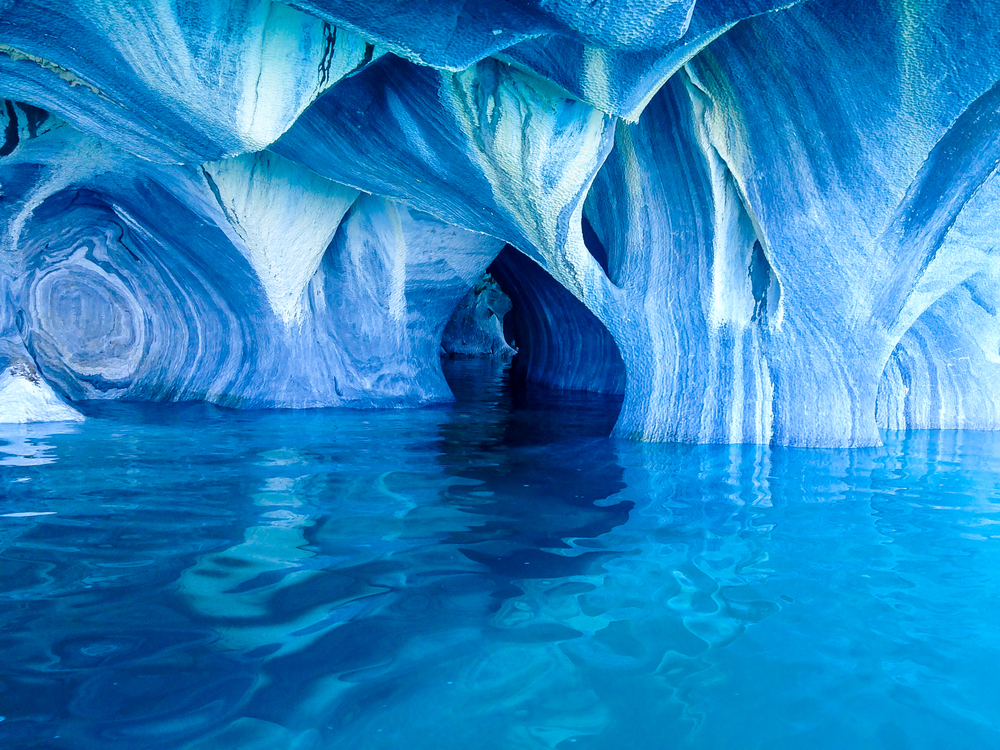
The formation of the Marble Caves is a testament to the interaction between the marble and the lake’s blue water. Marble is slightly soluble in water, and as the lake reached its present level, a process of solution commenced. The marble dissolved more rapidly at the water’s surface, leading to the widening of fractures within the marble, ultimately giving rise to an astounding array of caves, mazes, columns, and tunnels within the marble over a relatively short geological timeframe.
Among the most prominent structures are the Marble Cathedral and Marble Chapel. While Marble Cathedral is a small island situated on the peninsula, Marble Chapel is a marble island closer to the northern coast. Visitors have the opportunity to explore these natural wonders, walking beneath the islands through the mazes and tunnels, an experience that will undoubtedly leave them awestruck.
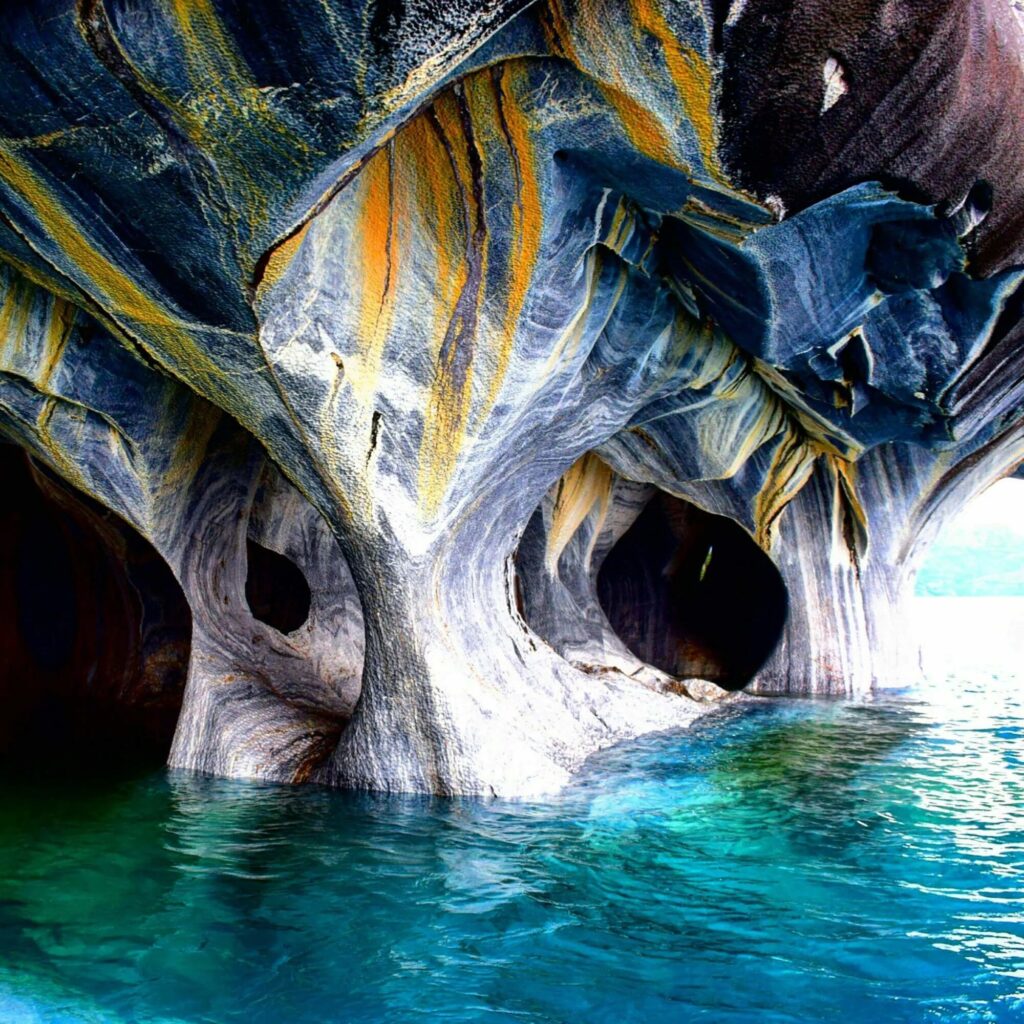
In conclusion, the Marble Caves on General Carrera Lake epitomize the awe-inspiring beauty of nature’s creative power. Formed over time by the harmonious dance between marble and glacial waters, these caves stand as a testament to the intricate marvels that the natural world can produce. For those fortunate enough to set foot in this paradise, the memories of sailing through the shimmering marble walls will remain etched in their hearts forever.

Leave a Reply